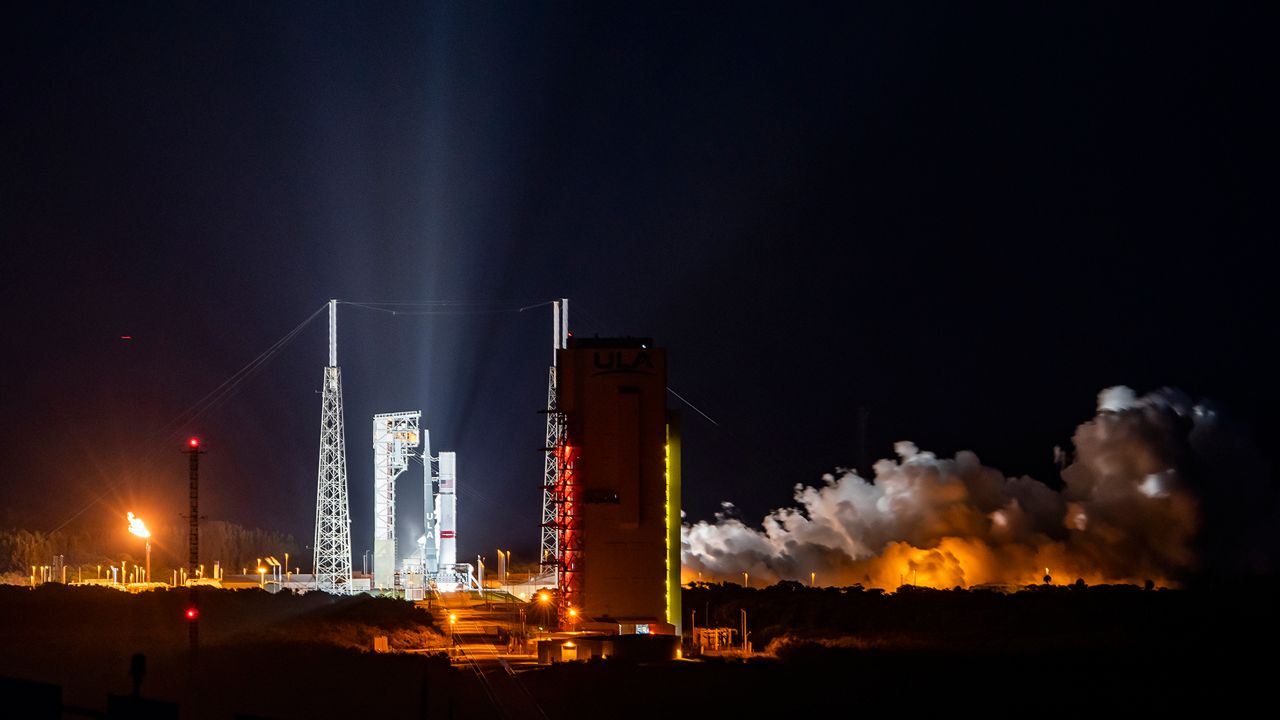CAPE CANAVERAL, Fla. — Despite poor weather pushing back the time of its booster engine flight readiness firing (FRF) test, United Launch Alliance was able to complete the test of the company’s Vulcan Centaur rocket Wednesday night.
What You Need To Know
- United Launch Alliance conducted a flight readiness firing test Wednesday for its Vulcan Centaur rocket
- The FRF test is one of the last before the first launch of the rocket
- The Vulcan Centaur rocket will undergo two certification test flights before it can start launching national security missions
- Customer Sierra Space said the Vulcan Cert-2 launch is still tracking towards a mid-December liftoff
- Scroll down to watch the test
The test was expected to start at 6 p.m. ET at Cape Canaveral Space Force Station, but weather pushed the time back to around 9 p.m. ET.
The test is one of the last steps toward getting the rocket to its first certification launch, dubbed Cert-1. The mission will carry a lunar lander for Pittsburgh-based Astrobotic, two demonstration satellites for Amazon’s Project Kuiper internet constellation and a memorial flight for Celestis.
On Wednesday night, the engine start sequence began at T-4.88 seconds and with that, the engines throttled up to the objective of two seconds, and then they powered down. The entire FRF lasted for six seconds.
🔥 Let's relive that beautiful #VulcanRocket Flight Readiness Firing! #CountdowntoVulcan 🔥 pic.twitter.com/WqPe3jbpiW
— ULA (@ulalaunch) June 8, 2023
According to ULA in a press release, the test seemed to go as planned, but the company’s engineers will have to review the data.
“We are more than 98% complete with the Vulcan qualification program. The remaining items are associated with the final Centaur V testing,” ULA stated in a press release on Wednesday night. “The team is reviewing the data from the systems involved in today’s test and, in parallel, continue with the Centaur V test stand anomaly investigation. Pending the data review and the investigation results, we will develop a plan for launch.”
ULA conducted two previous FRF tests in May but encountered some complications during the countdown procedures. Following its decision to stand down from the most recent attempt on May 25, the company found an issue in the Vulcan booster.
“During the countdown, the team observed a delayed response from the booster engine ignition system that needs further review prior to proceeding with the flight readiness firing,” ULA said in a statement.
This is the first firing of the Blue Origin BE-4 engines integrated into the Vulcan booster. They’ve previously gone through a series of certification tests apart from the booster.
Following this first launch, ULA aims to launch the Vulcan rocket at least one more time in 2023 for its second certification flight. In a statement to Spectrum News in May, Sierra Space confirmed it was tracking a launch no earlier than Dec. 15 of its Dream Chaser cargo spacecraft to the International Space Station.
That mission, dubbed Demo-1 by Sierra Space and Cert-2 by ULA, would be the first flight of the Dream Chaser spaceplane and mark the third vehicle available to NASA to use as part of the Commercial Resupply Services program.
On May 31, Sierra Space said it successfully powered up the spacecraft for the first time and “simulated the power that will be generated from Dream Chaser’s solar arrays once in orbit.”
“This is a milestone that points to the future and is a key moment in a long journey for Dream Chaser,” said Sierra Space Chief Executive Officer Tom Vice in a statement. “With this significant achievement, our Dream Chaser spaceplane is poised to redefine commercial space travel, opening up new possibilities for scientific research, technological advancements and economic opportunities in space.”
Both Cert-1 and Cert-2 missions need to be completed by ULA before it can start using Vulcan to launch national security missions for the U.S. Space Force and the National Reconnaissance Office.



